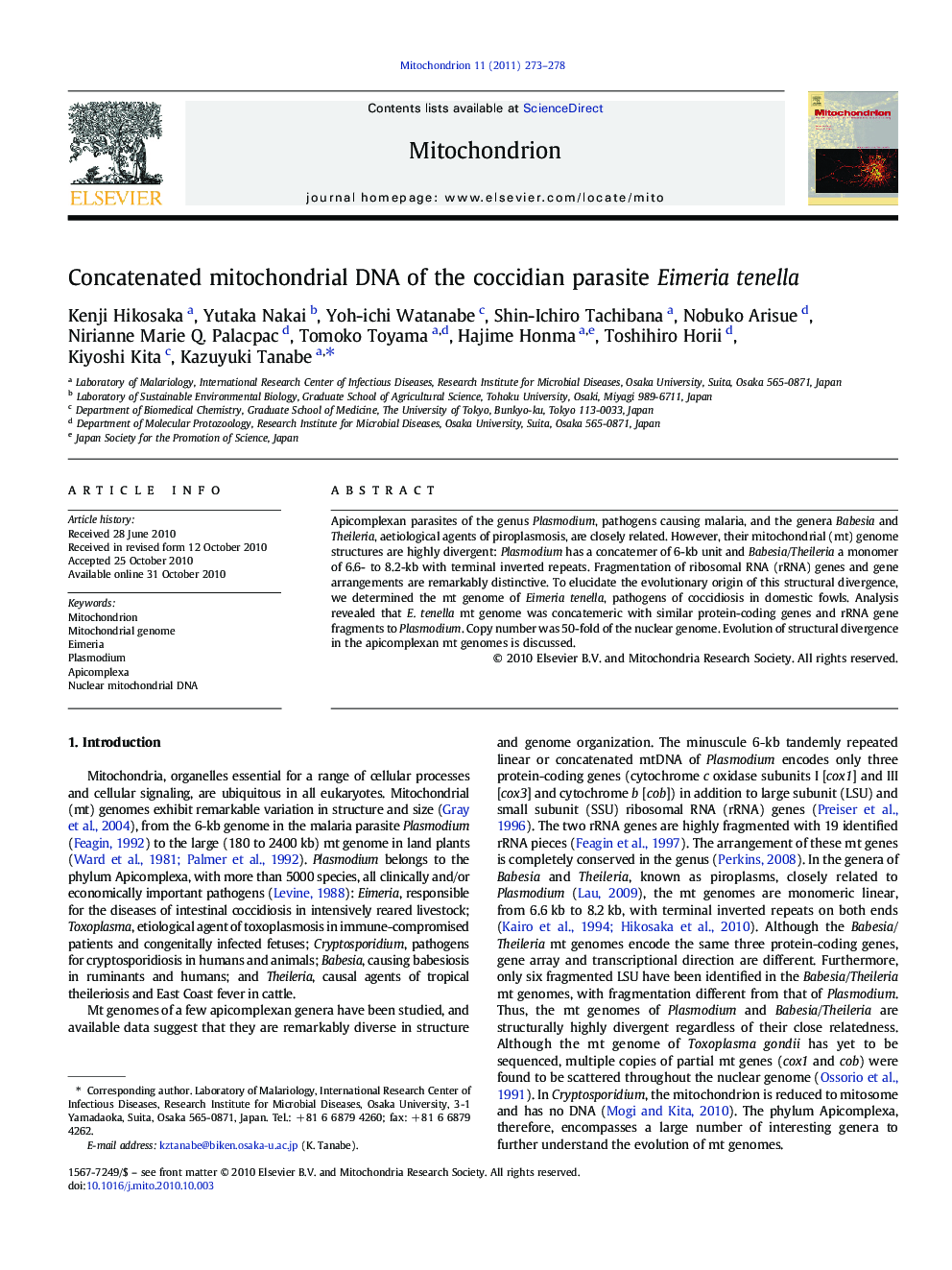| کد مقاله | کد نشریه | سال انتشار | مقاله انگلیسی | نسخه تمام متن |
|---|---|---|---|---|
| 2069588 | 1078411 | 2011 | 6 صفحه PDF | دانلود رایگان |

Apicomplexan parasites of the genus Plasmodium, pathogens causing malaria, and the genera Babesia and Theileria, aetiological agents of piroplasmosis, are closely related. However, their mitochondrial (mt) genome structures are highly divergent: Plasmodium has a concatemer of 6-kb unit and Babesia/Theileria a monomer of 6.6- to 8.2-kb with terminal inverted repeats. Fragmentation of ribosomal RNA (rRNA) genes and gene arrangements are remarkably distinctive. To elucidate the evolutionary origin of this structural divergence, we determined the mt genome of Eimeria tenella, pathogens of coccidiosis in domestic fowls. Analysis revealed that E. tenella mt genome was concatemeric with similar protein-coding genes and rRNA gene fragments to Plasmodium. Copy number was 50-fold of the nuclear genome. Evolution of structural divergence in the apicomplexan mt genomes is discussed.
Journal: Mitochondrion - Volume 11, Issue 2, March 2011, Pages 273–278